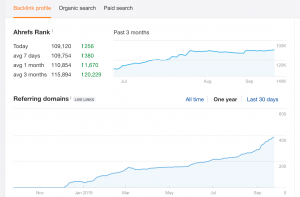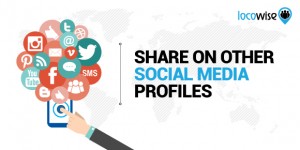 In a recent RingLead webinar, Jeff Soriano, Director of Demand Generation at SocialFlow, and Paul Dunay, award-winning B2B marketing expert and author, discussed the importance of social data for marketing success in a Q&A, panel-style webinar.
In a recent RingLead webinar, Jeff Soriano, Director of Demand Generation at SocialFlow, and Paul Dunay, award-winning B2B marketing expert and author, discussed the importance of social data for marketing success in a Q&A, panel-style webinar.
I was honored and excited to be a part of it, and if you missed it, here’s a look at their answers to our burning questions about the intersection of social media, marketing and data. It also includes questions we didn’t have a chance to cover live.
What are some key points to keep in mind when analyzing social data?
Paul: There is a big difference between data and insights. Data can be found on any spreadsheet; however, it’s the insights that are hard to find. The insights are truly in the eyes of the beholder. Therefore, it’s important to know the sources of your data, for instance, is 10% of your data from the Twitter fire hose or is the data from the full Twitter fire hose? What is the cocktail of sources that you are drawing from? What will those sources tell you? The cocktail of data sources is only part of the story. Always remember to keep that perspective.
Jeff: Social data can tell you a lot about your content and the people that read your content. As you launch campaigns, higher levels of data, such as reach and engagement, can help inform decisions regarding which content is resonating or connecting with your overall audiences. Over time, as you run campaigns, you can begin to create content based on the demographics of the audience that is converting. This data helps you understand your audience as people, which ultimately helps you create content that is relevant.
How has bad data impacted your marketing efforts? What did you do to resolve it?
Jeff: Bad data is an evolving issue. With cross channel and cross device data, connecting the dots in a buyer’s journey has become much more difficult. I have seen this disconnect cause issues with messaging as it relates to segmentation and targeting. Finding technology solutions that allow you to manage all of this, while also keeping your data clean, is the key. However, there is no magic bullet, and it’s a lot of work. To combat these issues, it is critical to constantly be cleaning your data, as well as have automation in place to ensure it doesn’t get dirty in the first place. You can’t look at this as a “one and done” project or annual effort.
Paul: I usually see bad data after it has impacted the marketing efforts on my team. For instance, it’s typically found when we’re blindly repeating a tactic. Without rechecking your data source, you can drive your response rates into the ground. Bad data could come from event lists, which is a constant battle. It could be a tactic that worked years ago, such as an event that was highly differentiated when it was began, but now it’s not as differentiated or effective. The antidote is to question assumptions and then test, test, and test again.
How do you combine social media and data for optimal tracking and targeting?
Paul: It’s not as easy as you make it sound in this question, after all, the devil is definitely in the details. If you can combine social media and data for effective tracking and targeting, you can be very powerful. Website and email are easy to glean from your marketing automation system, so it’s truly about combining social profiles in your process. Some marketing automation systems enable you to authenticate with your social profile, which gives you some social data. From there, you can progressively profile to get the email address.
Jeff: Social is just another channel for obtaining data that helps you target more effectively. If you are able to connect a social profile with an email profile and web profile, you can begin to create a holistic understanding of your customers. You can understand how, and with what content, you should be engaging with them based on the channel. The fact that social provides both engagement and demographic information makes it a great way to get your hands on that critical first party data. In regards to tracking, you have to leverage UTM tags, referral information, lead sources, etc. If your data isn’t tied together, you might be telling the wrong story.
What are some ways to gain market share on Facebook, LinkedIn and Twitter?
Jeff: I look at each of these a little differently. For Facebook, drop pixels on your high value pages and conversion pages to start building custom audiences. Use this data to include and exclude your audience from retargeting campaigns versus awareness campaigns. Over time, this information will help you build your ideal audience that can help you gain market share. For LinkedIn, the acquisition of Bizo is a real opportunity. What was once third party data for Bizo, is now first party data for LinkedIn, making their targeting of potential prospects that much more powerful and accurate. Twitter is all about the 80/20 rule. 80% of your content should be relevant information about your industry. You need to become a news organization. Once you have your audience’s attention and trust, you can start to promote your own content 20% of the time. Building that trust is critical.
Paul: Market share means sales, and sales on some of these channels, including those not mentioned such as Pinterest, will be different for each company. You need to pick the one that is right for your company, and then try to own it.
Can you utilize social data to convert prospects to customers? If so, how?
Paul: Many companies use social for exclusive offers. They essentially say, “listen to me and it will pay!” It’s a rewards model that is a mainstay of offline marketing. Anyone can buy their way to market share and move prospects to customers, but then it’s a race to the bottom of pricing for your product or service. Instead, you have to get creative. The best companies move the needle by creating great content and that’s all. No coupons or promotions or free turkey with each purchase.
Jeff: I think this question is less about using social data to convert prospects, but more about social in general. When social first came on the scene, marketers thought, “Wow free advertising!” We can just message our prospects and they will see our amazing offers. The reality, which is so obvious now, is that you need to understand where buyers are in their journey to determine what content you should be sharing or creating. If you do this well, and create a real relationship, you build trust that more easily allows you to convert that prospect into a customer.
How do you manage your data? Who owns the data at your organization? What is a best practice?
Jeff: It’s challenging to manage all of it. Marketing has some, sales has some, and so on. Organizations need to form data teams that have representatives from multiple units, because no single unit owns it anymore. I see ongoing data maintenance as the key. This is something that needs constant attention and cannot be dealt with periodically. Prioritize your data efforts because you can’t do it all at once.
What can marketers expect in the coming year when it comes to social media and data?
Jeff: Video is going to see a huge uplift in social. Facebook gets over four billion video views a day, up from just one million last year. I think marketers are going to put a lot more emphasis on it moving forward. It’s an engaging and powerful medium.
Paul: For my business, it’s better targeting with LinkedIn, because it’s about getting the most from a business to business channel. It’s about title targeting, and company targeting across many stages of the funnel, including top, middle and bottom.
We want to thank Jeff and Paul for their time. You can watch the webinar and hear more of their answers in the video below.
For more about marketing success with strong data, enjoy this free ebook.
(340)








